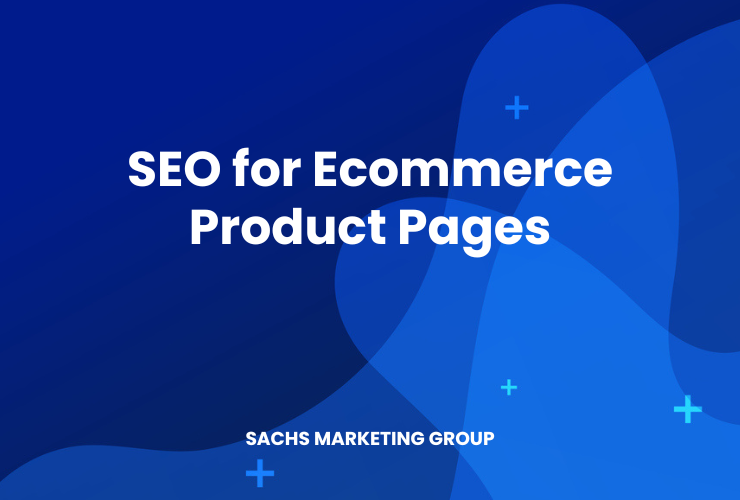To optimize ecommerce product pages, strategically incorporate targeted keywords, ensure user-friendly URLs, craft compelling meta tags, and utilize high-quality media. It’s about creating an informative, intuitive, and engaging user experience that resonates with both search engines and shoppers.
Navigating the competitive realm of ecommerce requires more than just standout products – it demands optimized product pages that attract and convert.
Understanding the intricacies of search engine optimization (SEO) for these pages is not a mere luxury—it’s a necessity for ensuring your products shine in the digital marketplace.
Here, we outline crucial SEO strategies that can catapult your product pages to the top of search engine results—read on to revolutionize your online presence.
Overview
SEO for Ecommerce Product Pages
Optimizing ecommerce product pages is an artful balance between serving prospective customers and satisfying search engine algorithms.
A well-optimized page will naturally draw in more traffic, elevate your brand’s visibility, and lead to better conversion rates. According to Google, around half of customers said they research potential purchases using Google before buying online (Google, 2019). If you want to maximize your sales potential, you simply can’t ignore the search engines – or SEO.
Let’s delve into the strategies that can make your product pages both SEO-friendly and compelling to customers.
1. Include Your Target Keywords in the Product Title
Incorporating your target keywords into product titles is one of the basic SEO tips for ecommerce sites, yet it’s often overlooked. It ensures that the most important and search-relevant terms are front and center where they’re most impactful—both for the search engine’s crawlers and the potential customers scanning search results.
It’s essential, however, to maintain a balance: the title must be keyword-rich yet still natural and appealing to the reader.
For example, if you’re selling eco-friendly water bottles, a keyword-optimized product title might be “Eco-Friendly Stainless Steel Water Bottle – BPA Free.” This title conveys the product and is likely to match a variety of search queries related to eco-friendly drinkware.
2. Use Simple and Descriptive Product URLs
Product URLs are a foundational element of SEO for ecommerce product pages. A well-crafted URL should be straightforward and reflective of the product’s content, helping search engines to understand and properly categorize the page.
It’s also beneficial for sharing purposes, as a clean, descriptive URL is more user-friendly and enticing to click on.
For example, instead of a URL filled with numbers and nonsensical characters, use a structure like “/eco-friendly-water-bottle-green.” Such a URL is clear, concise, and includes relevant keywords, improving its potential to rank higher in search engine results.
3. Optimize Your Meta Title and Description
The meta title and description serve as a brief yet powerful synopsis of your product page. They are crucial for engaging users and encouraging clicks from the search engine results page.
The meta title should encapsulate the essence of the product while also incorporating primary keywords near the beginning. Meanwhile, the meta description provides a bit more space to sell the product and encourage clicks, using persuasive language and even a call-to-action if appropriate.
Keywords should be woven seamlessly into both elements. For example, a meta title for an eco-friendly bottle might read, “Buy Eco-Friendly Water Bottles | BPA-Free & Sustainable,” with a meta description like, “Discover our range of eco-friendly water bottles. Sustainable, stylish, and BPA-free—perfect for your active lifestyle. Shop now for free shipping on orders over $50!”
This example demonstrates the inclusion of keywords while also detailing key product features and a shopping incentive.
4. Use Descriptive Headings and Prioritize Benefits Over Features
Crafting headings that are both descriptive and focused on the benefits rather than just the features can significantly enhance user engagement and SEO.
Headers should tell a story about the product that appeals directly to the consumer’s needs and desires.
For instance, a heading like “Stay Hydrated with Sustainable Style” immediately highlights the practical benefit of hydration and the added value of eco-friendliness. It speaks to the customer’s personal and social values, making the product more appealing.
Such headings not only draw in the user but also help search engines understand the context and content, improving the page’s visibility for related queries.
5. Include Product Attributes and Provide Links to Dedicated Pages
Detailing product attributes enhances the user experience and strengthens SEO by giving search engines more content to index.
Attributes might include material, size, color options, or any unique selling points. Additionally, linking these attributes to dedicated pages allows for a broader content network and internal linking structure that boosts SEO.
If you have a page on your site dedicated to “Eco-Friendly Materials,” linking the words “made with recycled plastics” on your water bottle product page to that dedicated page creates a rich interlinking system that enhances the authority of your site on the topic of eco-friendliness.
6. Create Engaging Product Descriptions that Stand Out
An engaging product description does more than inform – it entices and convinces. By using a narrative style, emotional appeals, or storytelling elements, you can differentiate your product from competitors.
Highlight the experience of using the product, not just the object itself. For the eco-friendly water bottle, rather than simply listing dimensions and capacity, you could describe the experience of using the bottle daily, its convenience, and how it contributes to a sustainable lifestyle. This technique makes your product memorable and more likely to resonate with the target audience, while strategically placed keywords help improve search rankings.
7. Include High-Quality Images and Video
Images and videos are not just decorative elements; they are instrumental in SEO and user engagement.
High-resolution images that showcase the product from various angles and videos that demonstrate the product in action can significantly boost time on page and conversions.
They provide an opportunity to include image alt-text and video descriptions rich with keywords, which assist in search engine indexing. For example, an alt-text for a bottle image could be “Eco-Friendly Stainless Steel Water Bottle in Action,” which helps the page to show up in image searches related to eco-friendly products.
Moreover, rich media like this can lead to higher click-through rates and shareability, which indirectly boosts SEO through enhanced user engagement.
8. Provide Consistent Breadcrumb Navigation
Breadcrumbs are a navigational feature that not only aids users in understanding their location within your website but also bolsters your SEO efforts. They provide a clear path back to previous pages, usually in the format of “Home > Category > Subcategory > Product.”
This structure enhances user experience by simplifying navigation, and from an SEO perspective, it allows search engines to understand the hierarchy and structure of your site, improving the indexing of your pages.
For example, a breadcrumb trail for an eco-friendly water bottle might look like “Home > Kitchenware > Drinkware > Eco-friendly Water Bottle,” enabling users and search engines alike to navigate and comprehend the site’s layout with ease.
9. Highlight “You might also like” Products
Including a section on product pages that suggests related products, often labeled as “You might also like” or “Related Products,” serves a dual purpose.
It enhances the user experience by providing them with additional options they may find appealing, and it keeps them engaged and browsing your site longer.
For SEO, this feature can decrease bounce rates and increase the number of pages visited per session. When a customer viewing a water bottle sees recommendations for matching eco-friendly lunchboxes, they’re not only more likely to explore these products but also to perceive your brand as a one-stop shop for sustainable kitchenware.
This interconnectedness signals to search engines that your website is a resourceful hub for related products, which can positively affect your rankings.
10. Apply Product Schema with Reviews
Using structured data, or schema markup, for product listings and reviews is a potent way to enhance your product pages for SEO.
When you apply product schema, you’re providing search engines with detailed product information in a standardized format, making it easier for them to display rich snippets in search results, such as price, availability, and review ratings.
The markup for an eco-friendly water bottle could include ratings from customer reviews, which appear directly in search results, often leading to a higher click-through rate. Positive reviews displayed in search results can also build trust with potential customers before they even visit your site.
11. Include a FAQ Section Supported by Schema
A Frequently Asked Questions (FAQ) section on product pages can be a valuable SEO asset. It addresses common customer inquiries, which can improve on-page time and user experience.
When paired with FAQ schema markup, it enables search engines to feature your content directly in search results.
This means that when someone searches for something like “How to clean an eco-friendly water bottle,” they might see the answer from your FAQ displayed prominently in search results.
This not only boosts SEO but positions your brand as an authority. Additionally, it can cut down on customer service inquiries by preemptively answering common questions, saving your business time and resources.
Need Help with Your Ecommerce SEO?
Are you looking to maximize your ecommerce site’s visibility and potential to attract customers who purchase your products? Sachs Marketing Group is here to help!
Sachs Marketing Group is a full-service digital marketing agency that provides SEO services, including everything from keyword research and on-page optimization to link building and ecommerce SEO. Our expertise in ecommerce SEO ensures that your products don’t just appear in search results—they captivate and convert.
Contact us to discover a partnership that places your products in the spotlight.
Conclusion
Mastering SEO for ecommerce product pages is a continuous effort that can lead to significant gains in traffic and sales.
By implementing these tactics, you can create product pages that are not only optimized for search engines but also crafted to provide the best user experience. With the right approach, your ecommerce site can thrive in the competitive online marketplace.
Contact us today to get the conversation started!













